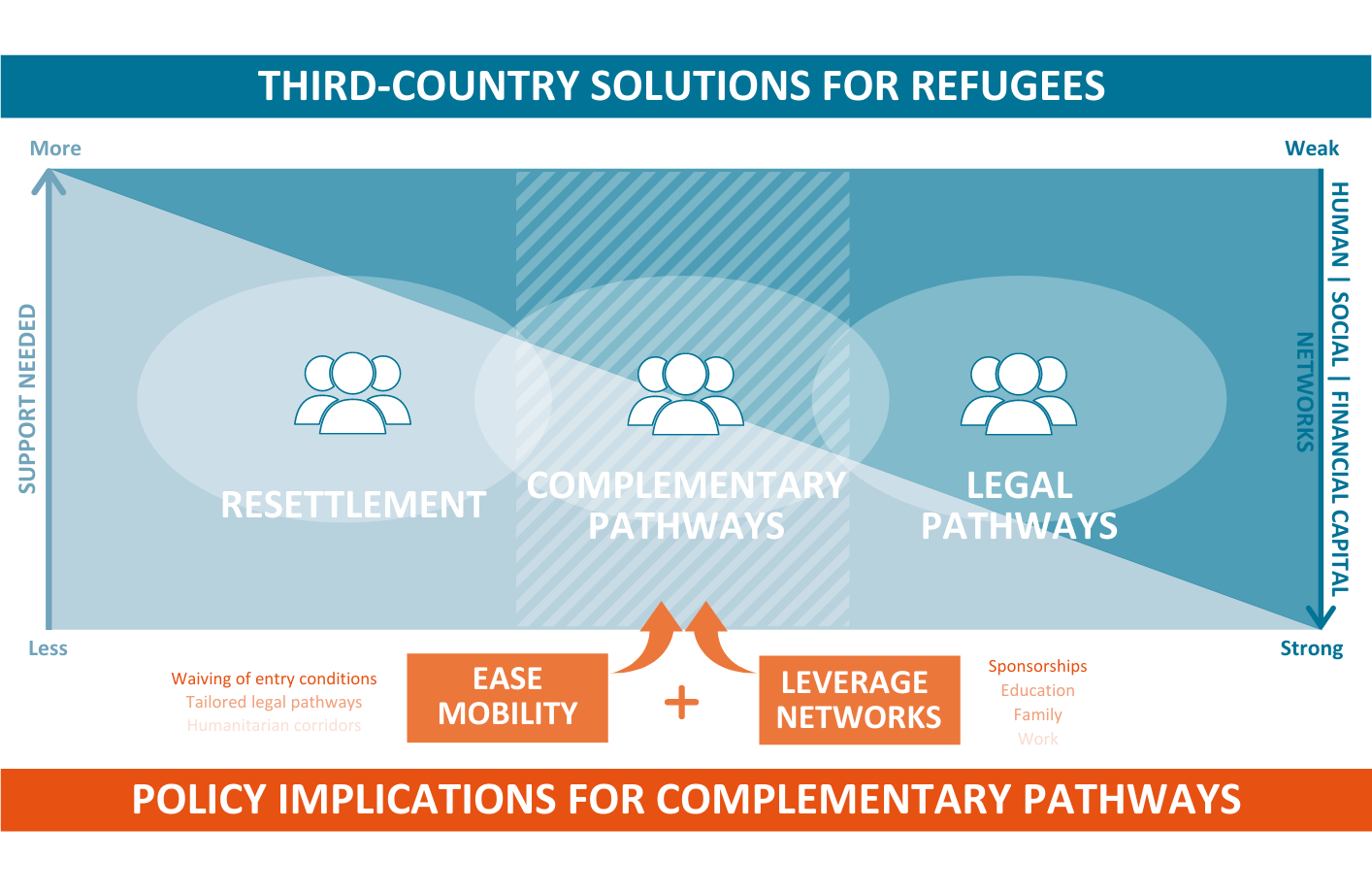TRAFIG policy brief no. 3
Networks and mobility
A case for complementary pathways
Complementary pathways have gained much prominence in recent global and European policy discussions as an innovative and new tool to broaden and scale up third-country solutions for refugees. Indeed, the need for ramping up access to durable solutions for refugees is pressing in the face of ever longer-lasting conflicts and far too low resettlement numbers. While complementary pathways are commonly considered as new legal pathways that need to be developed for refugees, thereby perpetuating the narrative of refugees needing support while neglecting their human and social capital, various examples show that refugees do possess and use existing pathways and seek individual solutions outside of the refugee regime—if their resources and networks allow them to do so.
Based on various examples, this policy brief, therefore, argues that facilitating movement for forced mi grants based on their human and social capital could become the key added value of complementary pathways
 Figure: Policy implications for complementary pathways
©ICMPD/ Martin Wagner, Camilla Fogli
Figure: Policy implications for complementary pathways
©ICMPD/ Martin Wagner, Camilla Fogli
Authors: Martin Wagner, Caitlin Katsiaficas
Cite as: Wagner, M., Katsiaficas, C. (2021). Networks and mobility: A case for complementary pathways (TRAFIG policy brief 3). Bonn: BICC. DOI: 10.5281/zenodo.5845978
You can download TRAFIG policy brief no. 3 here.